Philodendron 69686 is probably a natural Philodendron hybrid native to Brazilian rain forests. This rare plant has multiple growth forms, and mature plants will have adorable three-lobed smooth, shiny green leaves with the upper lobes resembling bunny ears.
We’ve insight on Philodendron 69686, including its appearance, care tips (soil, watering, humidity, light, feeding, etc.), and issues it may have. As you will realize, it is easy to care for and purifies the air.
We will also let you know more about its price and places to buy it in the US, UK, Canada, Australia, etc. that including Etsy.com, eBay, Facebook, and Instagram.
Lastly, since many people mislabel and confuse it with Philodendron Joepii, we have something small on how to tell these two plants apart quickly. Also, there is something on Philodendron 69686 vs. mexicanum.
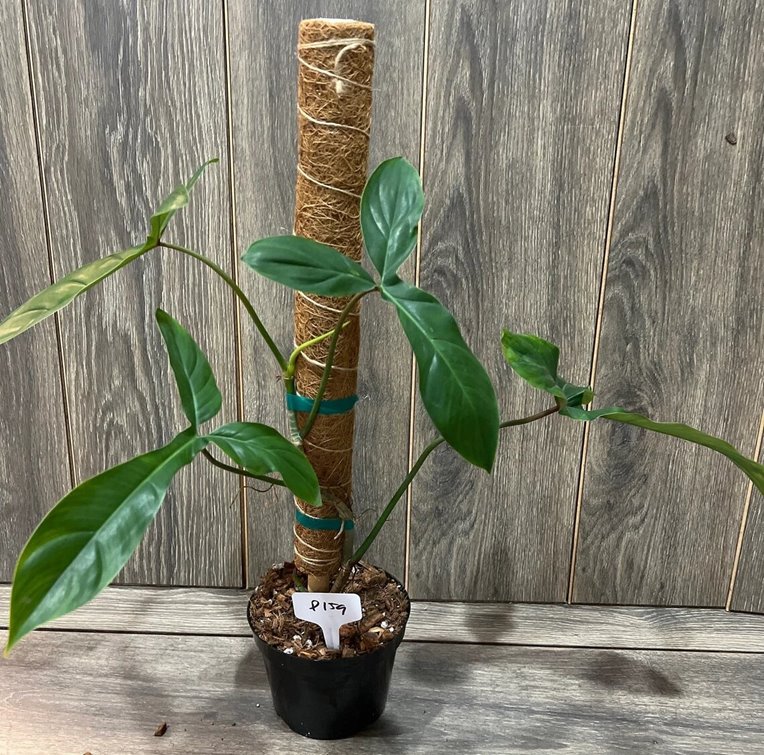
Contents
- Quick overview
- Description and identification
- Philodendron 69686 vs. Philodendron Joepii
- Philodendron 69686 vs. mexicanum
- Philodendron 69686 variegated form
- Philodendron 69686 care and growth requirements
- Philodendron 69686 propagation
- Issues and problems
- 1. Pests and diseases
- 2. Root rot
- 3. Leat discoloration
- 4. Drooping and leaves curling
- Where to buy Philodendron 69686
- Frequently asked questions (FAQs)
Quick overview
- Scientific name: None (undescribed)
- Common names: Philodendron 69686, 69686 Philodendron, P. 68696, Philodendron Big Ears (Australia)
- Family: Araceae (arum family or aroids)
- Natural habitat: Brazil
- Toxicity: Toxic to cats, dogs, and humans. Why? Its sap has sharp, needle-like insoluble calcium oxalates. These crystals will cause severe oral irritation and a burning sensation if chewed. Other signs are redness and swelling of lips, tongue, or mouth, drooling, loss of appetite, difficulty swallowing, etc.
- Care level: Low maintenance or easy
Philodendron 69686 is probably a natural Philodendron hybrid with more than one growth form. It is still unclear if the plant is truly a hybrid or even a species, the origin is uncertain as a specimen was found in Roberto Burle-Marx's garden, and there isn’t much history or information.
It remains undescribed and doesn’t have a scientific name, and not much detail is known. 69686 or P. 69686 is just the Missouri Botanical Garden accession number Dr. Thomas B. Croat gave this plant, i.e., a MOBOT number. Some people mislabel it as Philodendron sp. 69686.
Lastly, sometimes, you may see a Philodendron 69686a label, which is nothing other than a variation.
Description and identification
Philodendron 69686 is an evergreen scandent (climbing) flowering plant native to Brazilian rainforests. It grows as a hemiepiphyte (has terrestrial and epiphytic growth phases).
Like most of the other Philodendrons, this aroid has various growth forms and morphs, i.e., seedling, juvenile, and mature specimens look different.
Baby plants will have elongated oval-oblong green leaves, while juvenile plants will start having leaves with rounded posterior lobes that gradually elongate as your plant continues climbing.

Mature Philodendron 69686 will have three-lobed green smooth, shiny leaves that look somewhat like bunny ears. These get pretty large, i.e., about 2 feet (24 inches). The lobes are slightly rounded, especially in subadult plants.
Stems have aerial roots, and when they mature, they will produce inflorescence flowers borne on a spadix and surrounded by a spathe (bract).
Lastly, P. 69686 has a fast growth rate and can grow about 4 to 6 feet inside your home. But since it is a climber, you must give it a totem, moss pole, or somewhere to climb.
Philodendron 69686 vs. Philodendron Joepii
Since these two plants have tri-lobed leaves, some people often confuse or mislabel. However, it shouldn’t be difficult to tell them apart.
Philodendron Joepii is also a natural hybrid. But it is native to French Guiana and not Brazil. This plant has tri-lobed leaves. However, two upper lobes that emanate at about 45 degrees upward and outward are much smaller than the lower one. Also, the lower lobe is broader but tapers upward and becomes narrower.

Philodendron 69686 vs. mexicanum
Philodendron mexicanum is native to Mexico to Colombia and resembles P69686. However, it has narrowly triangular sagittate (arrowhead shaped) leaves with elongated and pointed posterior lobes.
Also, the leaf blade edges are slightly undulating, and younger plants will have magenta to the maroon underside.
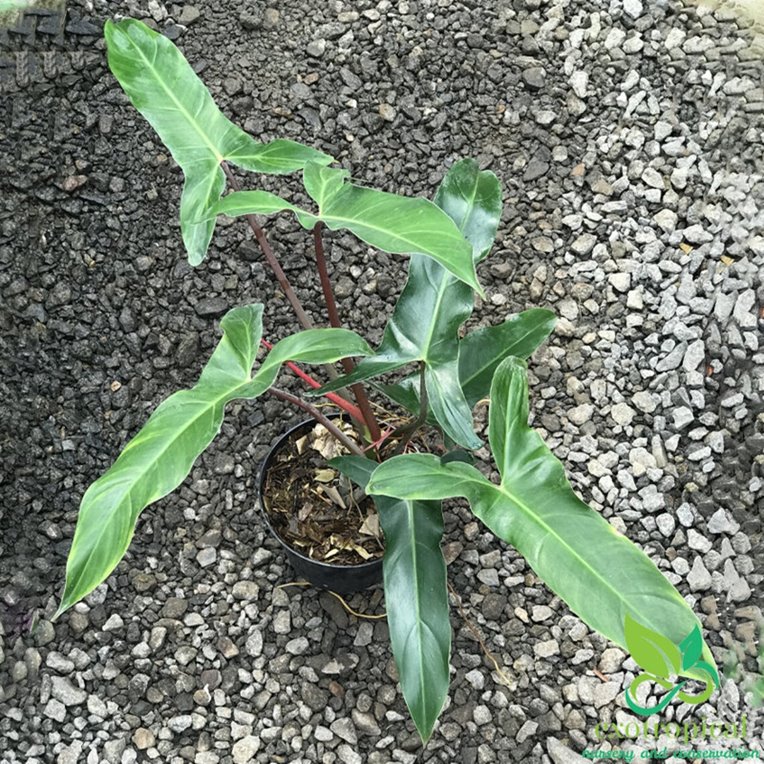
On the other hand, P69686 is a three-lobed plant with more rounded lobes that are a bit constricted to the base.
Philodendron 69686 variegated form
While it is possible to have a variegated Philodendron 69686, it must be scarce. We haven’t seen any on sale. So far, we haven’t seen a variegated form of this plant. So, we cannot comment on its appearance or prices.
Philodendron 69686 care and growth requirements
Philodendron 69686 needs a warm, humid area with filtered or bright indirect light. Grow it in an airy, well-drained soil high in organic matter and water it when a few inches of the potting mix feel dry.
Also, don’t forget to feed, prune, stake, and repot it. Here are care details:
- USDA hardiness zone: 10-11, not frost-hardy.
- Temperature: 65-75 °F (18-29°C). Avoid temperatures below 50°F, protect your plant from cold drafts, and don’t place it near heat sources.
- Philodendron 69686 Humidity: Prefers high humidity, 60% or more but can tolerate 40-50%. If too low, have a pebble tray or humidifier. Also, moving your plant to a more humid area and misting may help.
- Light needs: Bright indirect light but can tolerate medium. Avoid the direct hot sun, and if too little, invest in grow lights.
- Soil mix: Best potting mix for P. 69686 should be airy, well-drained, and rich in organic matter. Buy an aroid mix (See Etsy.com) or add perlite, bark chips, peat moss, and compost to make one.
- Watering: Thoroughly water this aroid when the top 1-2 inches of the potting mix feels dry or when your XLUX Soil Moisture Meter reads three or less or on the dry zone.
- Fertilizer: Feed once a month during the growing months with an all-purpose, balanced, liquid fertilizer. Start with half recommended strength. I recommend Miracle-Gro Indoor Plant Food (Liquid).
- Pruning: Snip any dead, damaged, or diseased leaves with sterilized gardening shears. Also, you can cut back a few of the stems to control growth in spring or summer.
- Repotting: You should repot it after every 2-3 years or when rootbound. Select a pot 2-3 inches wider in diameter.
- Stake: Provide and train this climber on a totem, moss pole, or trellis.
Philodendron 69686 propagation
Philodendron 69686 propagation is by stem cutting or air layering. Seeds are very rare or hard to find.
Stem cutting propagation can be in water or soil, and you need cutting with at least a node. Unfortunately, you cannot propagate this plant with a nodeless stem, aerial roots, or leaf with the petiole.
On the other hand, air layering involves wrapping moist sphagnum moss on a selected stem while still attached to the mother plant. Keep it moist and aerated. Once the node roots, cut just below it and transplant it to its growing pot.
Issues and problems
As you grow this aroid, you may encounter some problems which are not unique to this aroid. Common ones include:
1. Pests and diseases
This plant may have thrips, scale insects, mites, or mealybugs. Fortunately but they are uncommon. Also, you can quickly treat them with insecticidal soaps or neem oil like Bonide BND022- Ready to Use NeemOil, should your plant have any of these bugs.
Similarly, diseases (fungal and bacterial leaf spots or blights) are uncommon if you isolate new plants and practice proper sanitation. Always wash your hands and sterilize gardening tools to avoid diseases.
2. Root rot
Root rot is a prevalent issue for people with poorly draining potting mix, an oversize pot, or fond of overwatering this aroid. Signs include a mushy stem base, wilting, yellow leaves, stunted growth, etc.
If your plant still has some white or tan roots, repot it immediately, cutting any decayed portions with sterilized gardening shears.
3. Leat discoloration
Sometimes, your P69686 leaves may turn yellow, brown, or black. Except for normal aging, causes have to do with care, growing conditions, pests, or disease.
For instance, the yellowing of leaves may indicate overwatering. But it can be too much or little light, cold drafts, heat stress, underwatering, and lack of nutrients. Even rootbound plants may have yellow leaves.
Brown tips and edges may signify too much light, low humidity, underwatering, heat stress, fertilizer burns, transplant or repotting shock, etc.
Lastly, black, brown, or yellow spots signify pests and disease. However, other things may be a cause if you see patches. For instance, brown or black splotches may be a sign of overwatering.
4. Drooping and leaves curling
Plant leaves curl to reduce moisture loss or for protection and droop when cells don’t have water to remain rigid. Causes are similar, including underwatering, too much light, heat stress, and low humidity.
Also, anything that increases moisture loss from leaves or stops roots from absorbing water like root rot, fertilizer burns, etc.
Where to buy Philodendron 69686
Are you looking for Philodendron 69686 on sale? Start with Etsy.com and eBay. These two marketplaces have vendors from all over the world, i.e., the US, Canada, Australia, the UK, Philippines, Thailand, Singapore, etc. Also, you will find those willing to ship to your location.
The next place to hunt for this rare aroid is Facebook and Instagram. These social media platforms also have vendors from across the globe.
More places to check if they still have these this aroid and their prices include the following:
The US
- Plant The Jungle (Miami, FL)- $115.00Sale Price
- NSE Tropicals (Plantation, FL) - $125.00
- Vedas Plant Shop (Chicago, Illinois) -$555.00
Europe
- Best Buds (Gent Ghent, Belgium) €90,00
- Factory Foliage (Zimmern ob Rottweil, Germany) - €130.00
- Nelumbo Garden (IJzendoorn, Netherlands) - € 119,50
- Hall Aroid House (the UK) - £58.95
Australia
- Philodendron Valley (Far North Queensland) AUD 100.00
- Chalet Boutique (Tasmania, Australia)- $299.95
- It Plantae (Sydney, Australian)- $159.00
Asia
- Qach Lifestyle & Garden (Manila, Philippines) - ₱2,500.00
- Carousell (Singapore) - S$48 (Marketplace)
These are not the only places; you can also google “Philodendron 69686 for sale” to get more vendors, including those near your location.
Note:
Before buying from any online vendor, request to see the picture of the actual plant you will receive. Also, go for trusted sellers with lots of positive feedback (reviews and comments).
Frequently asked questions (FAQs)
Yes. Philodendron 69686 is a rare houseplant that only a handful of vendors have. N e of the large-scale horticultural growers or big box stores have it. Also, you are unlike to find it even at tropical plant specialty stores.
Philodendron 69686 price ranges from $50 to $200 depending on the plant size (unrooted, rooted, small, established, or large) and where you buy it. However, some vendors may sell large established plants for over $200.

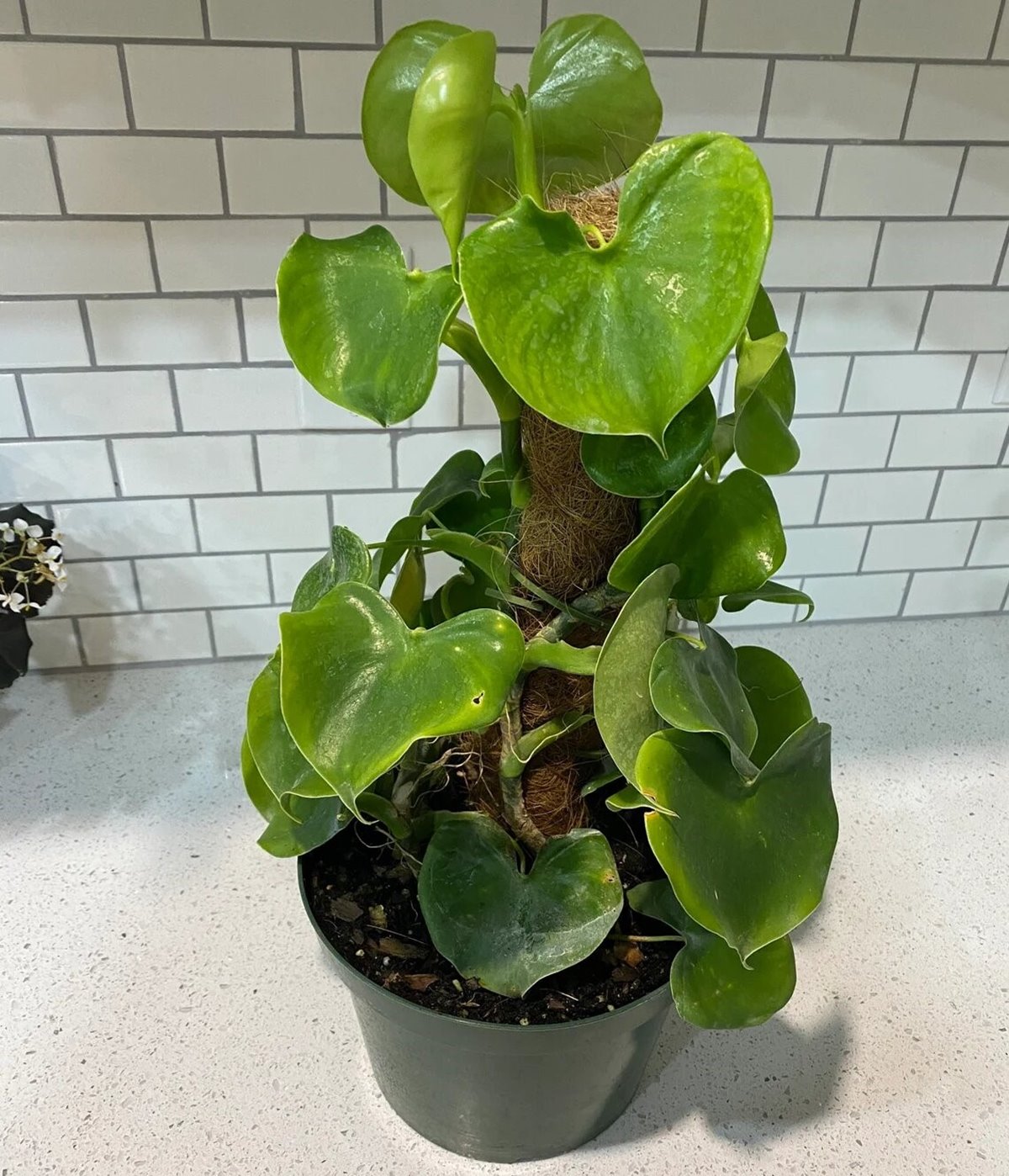
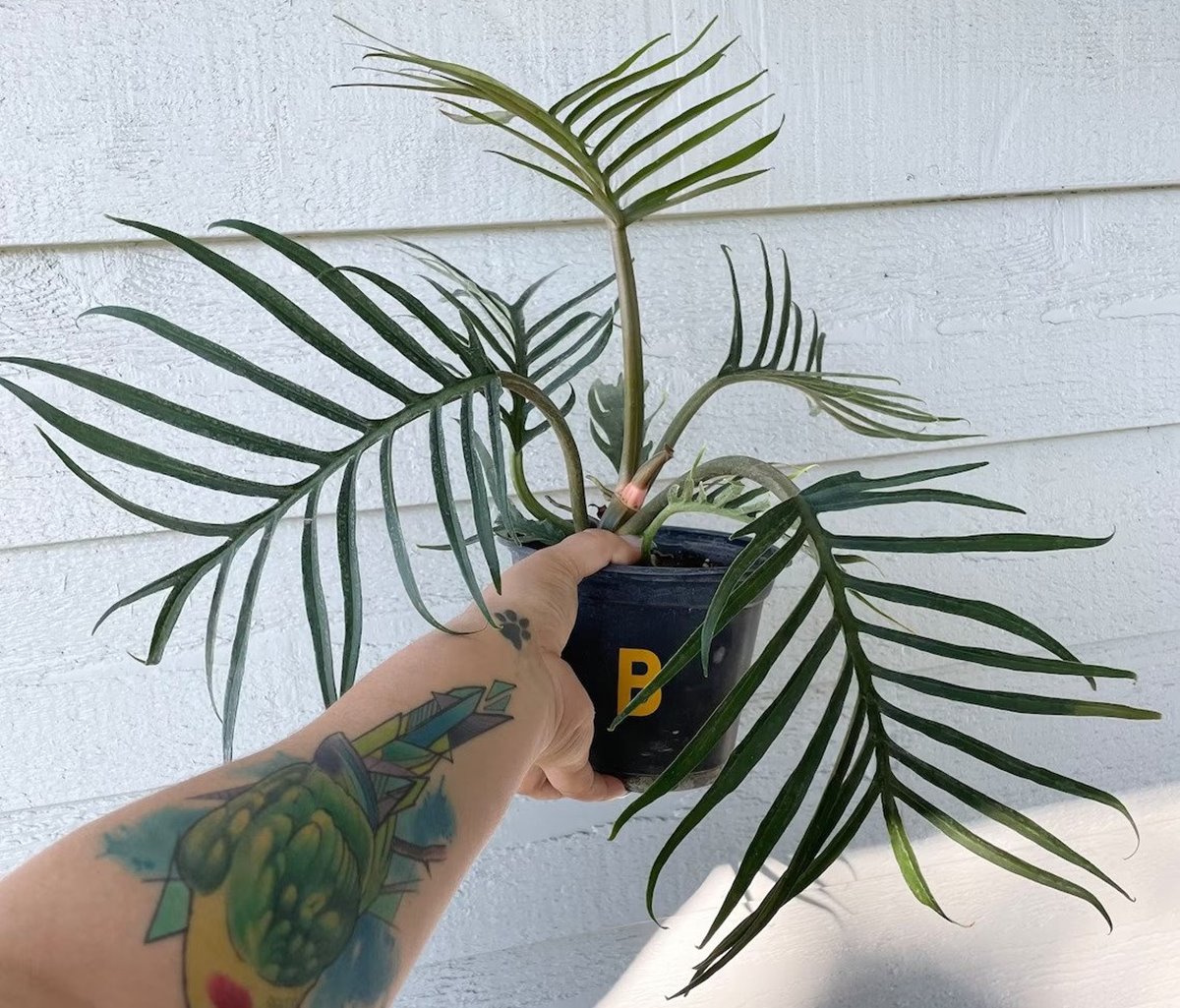
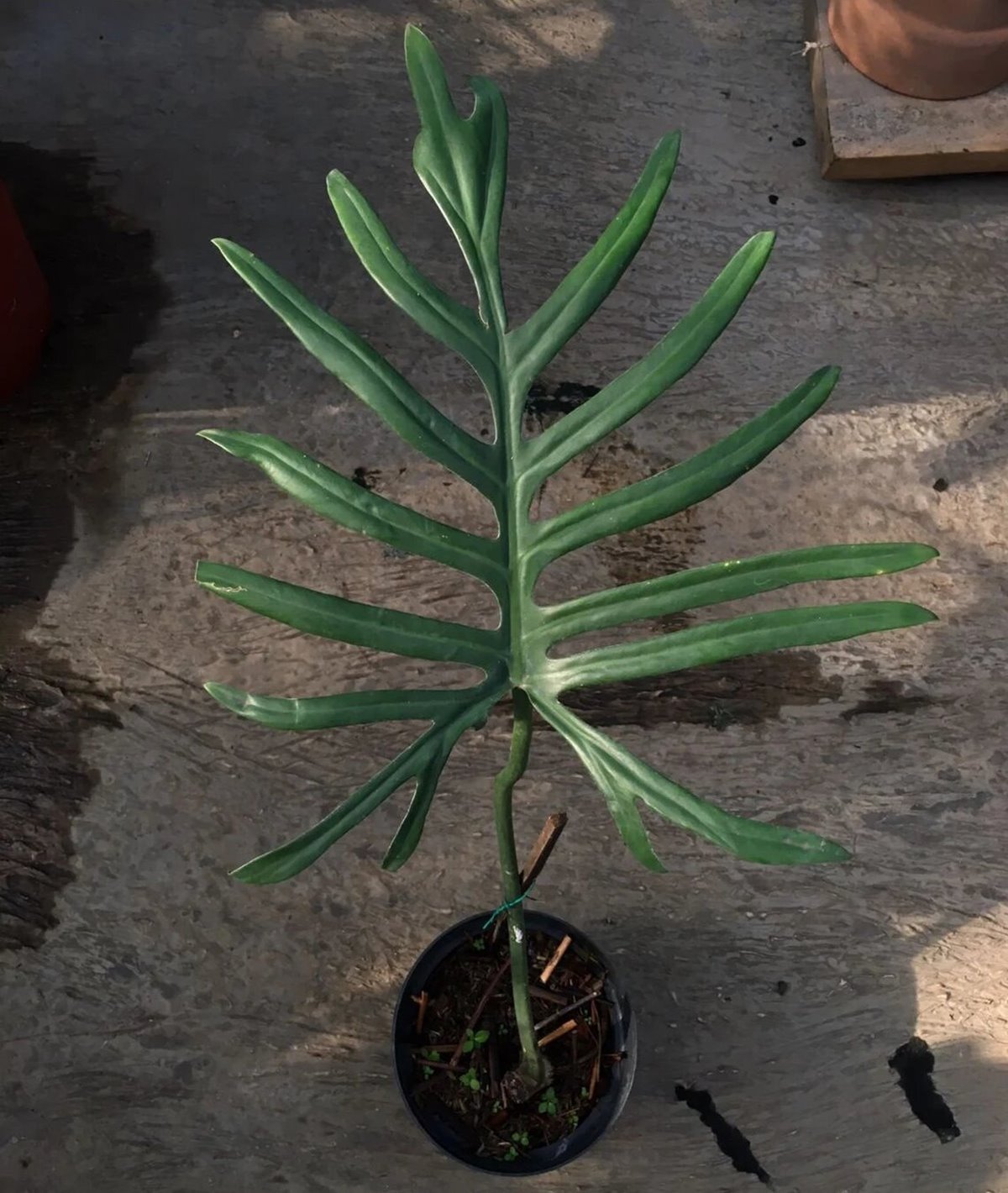

Leave a Reply